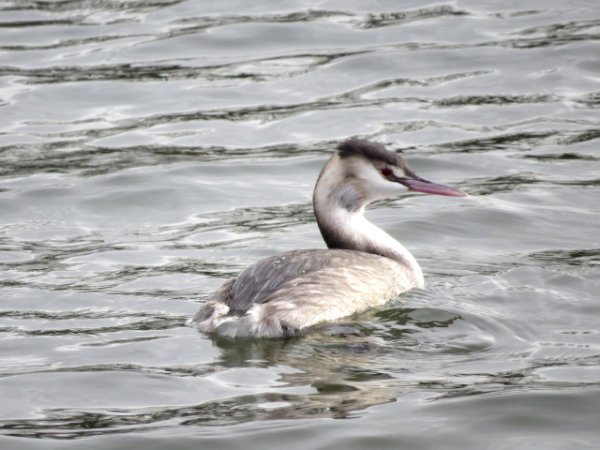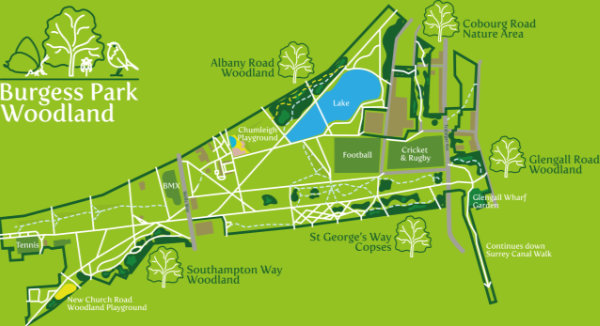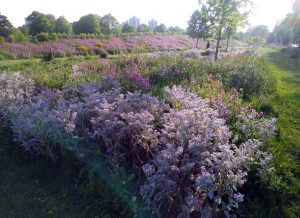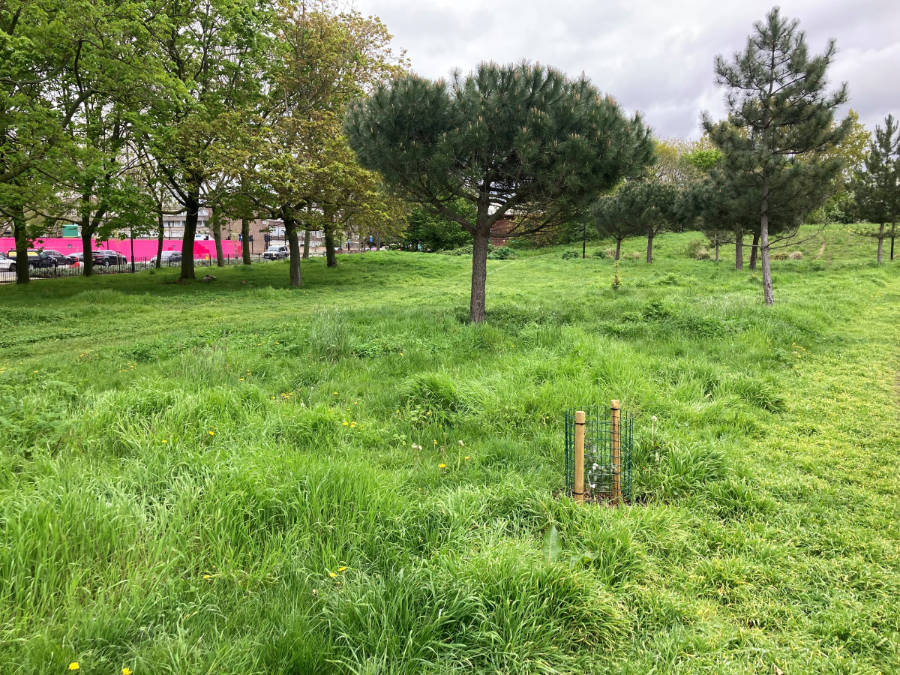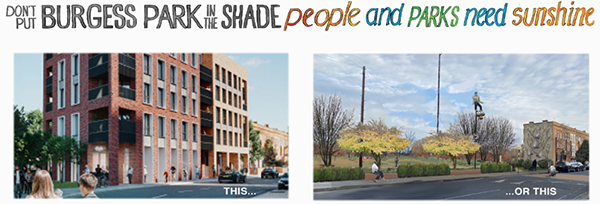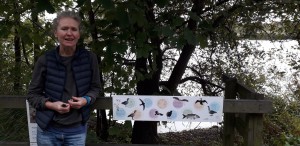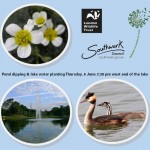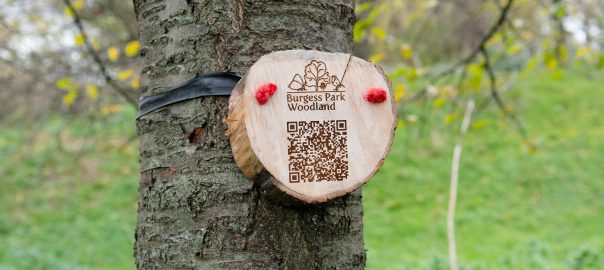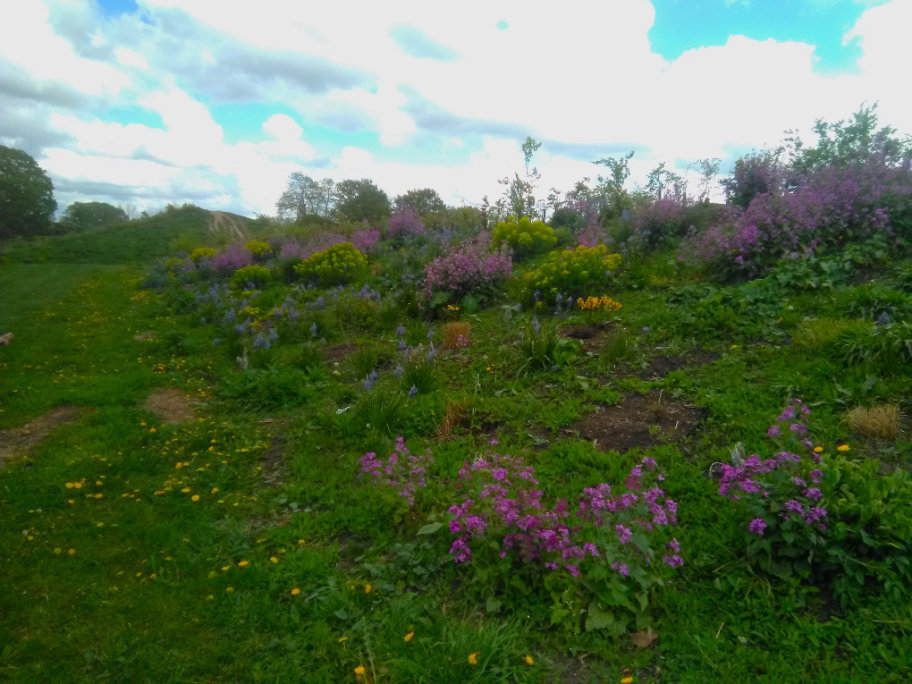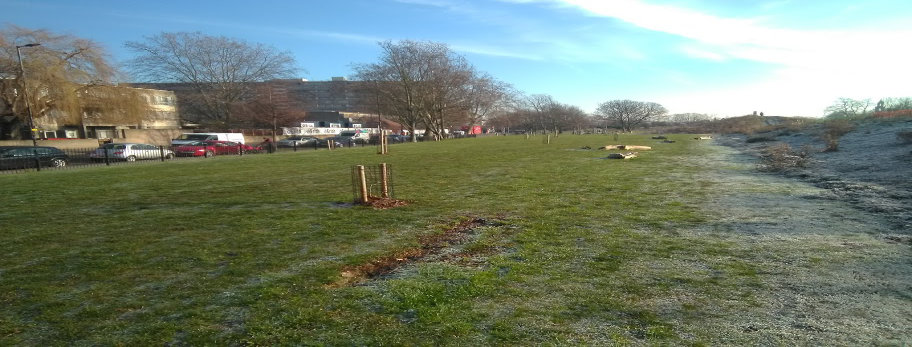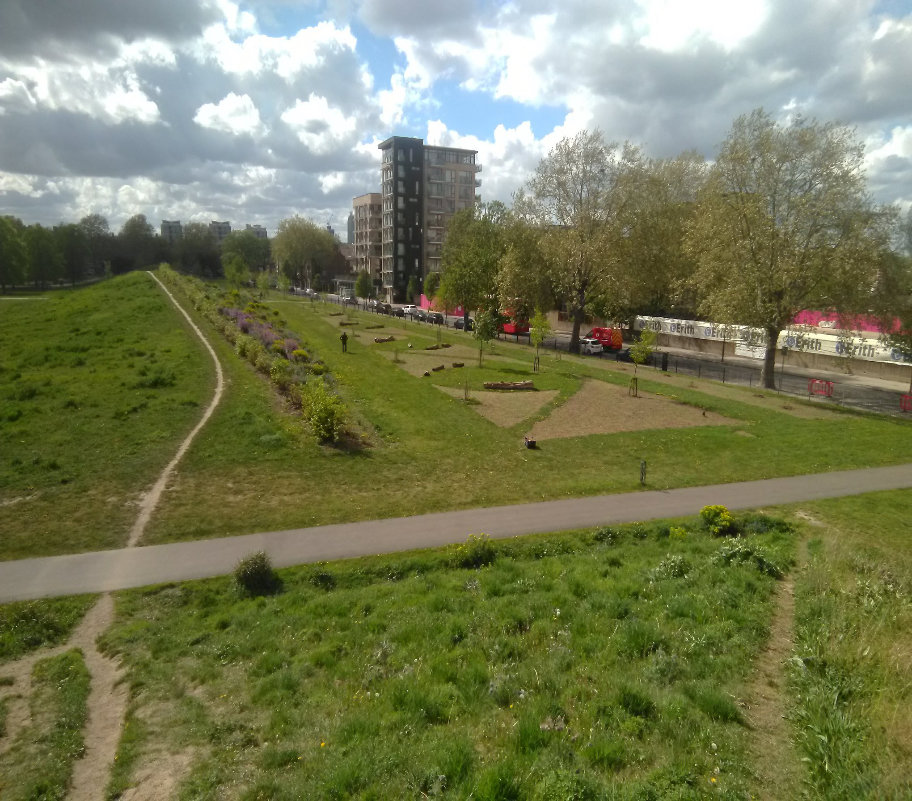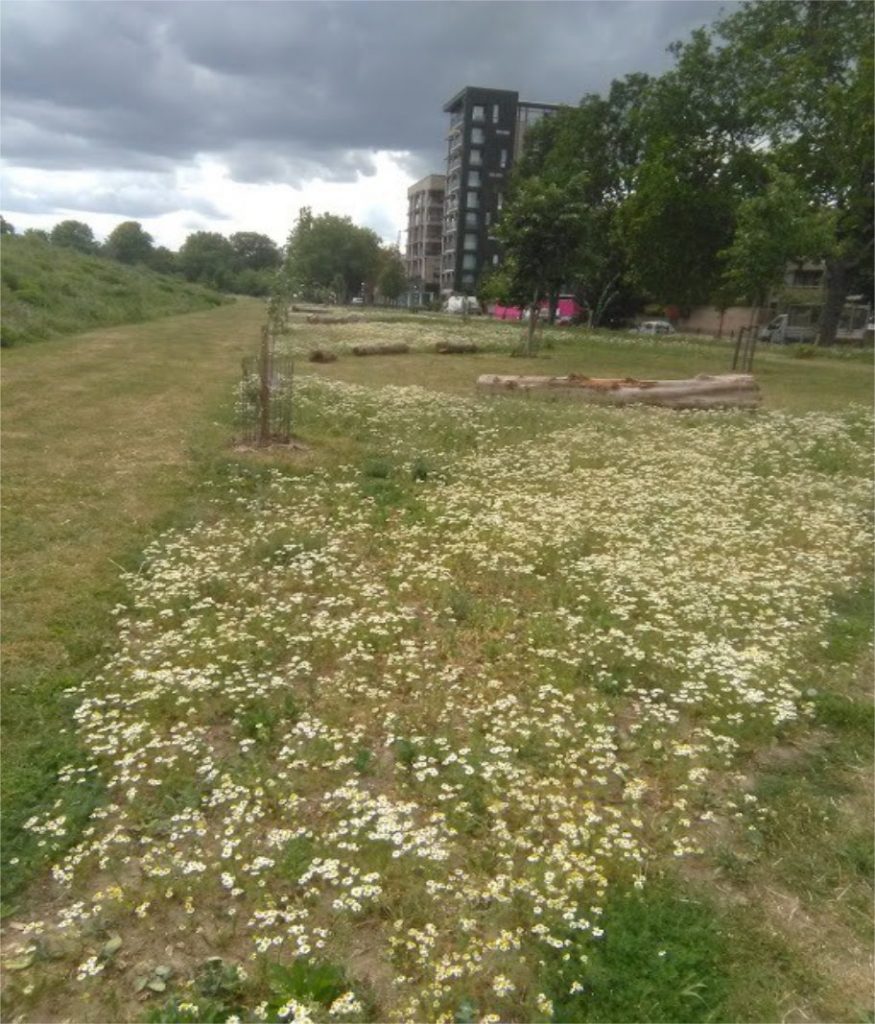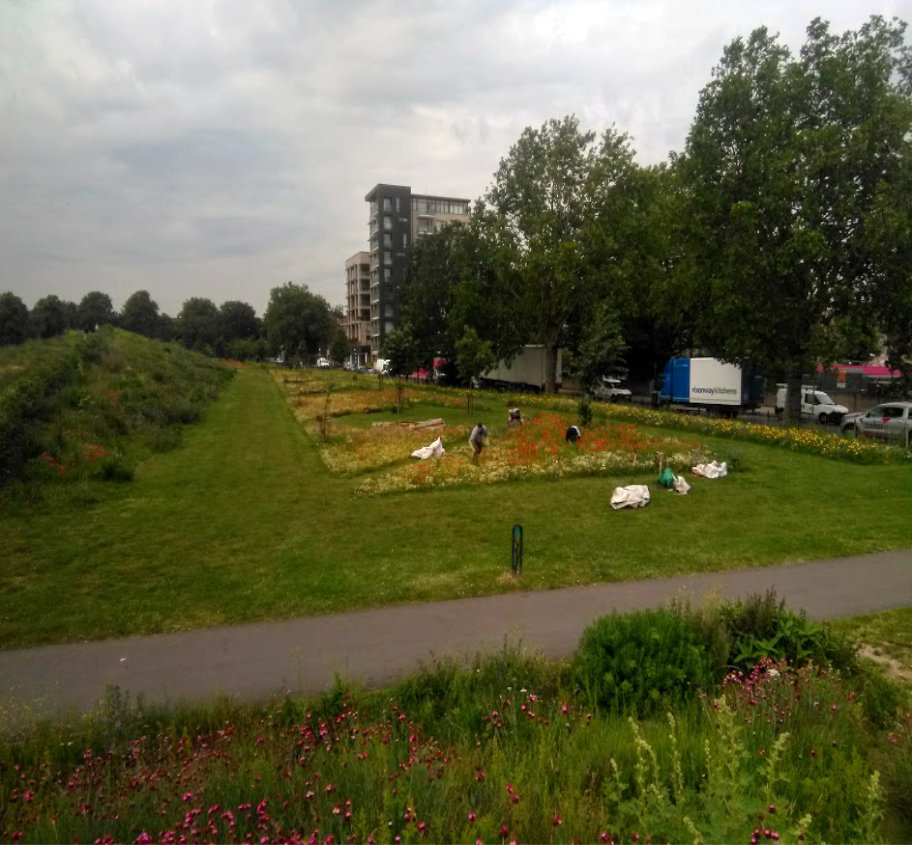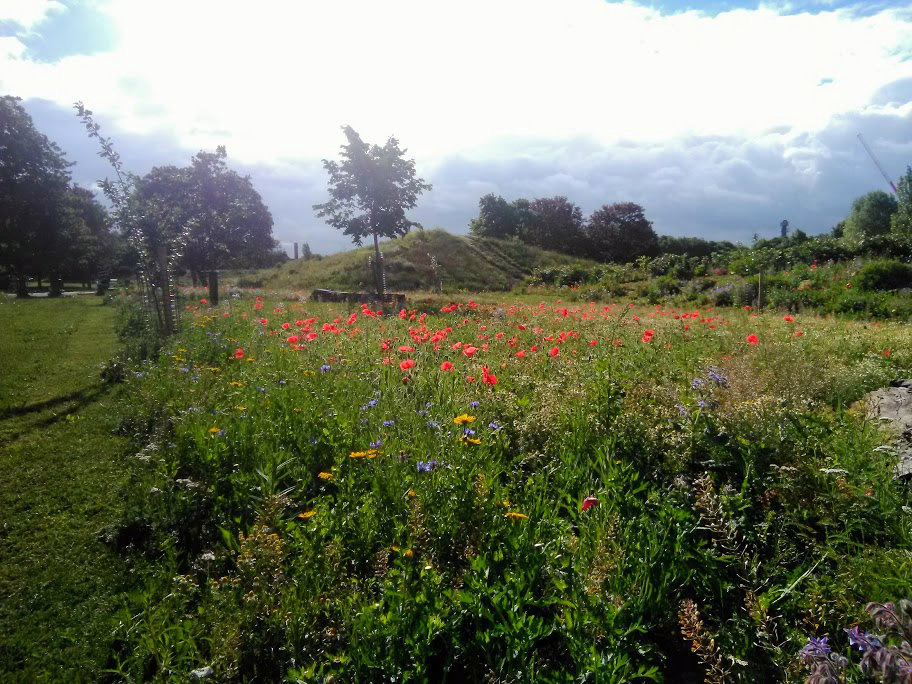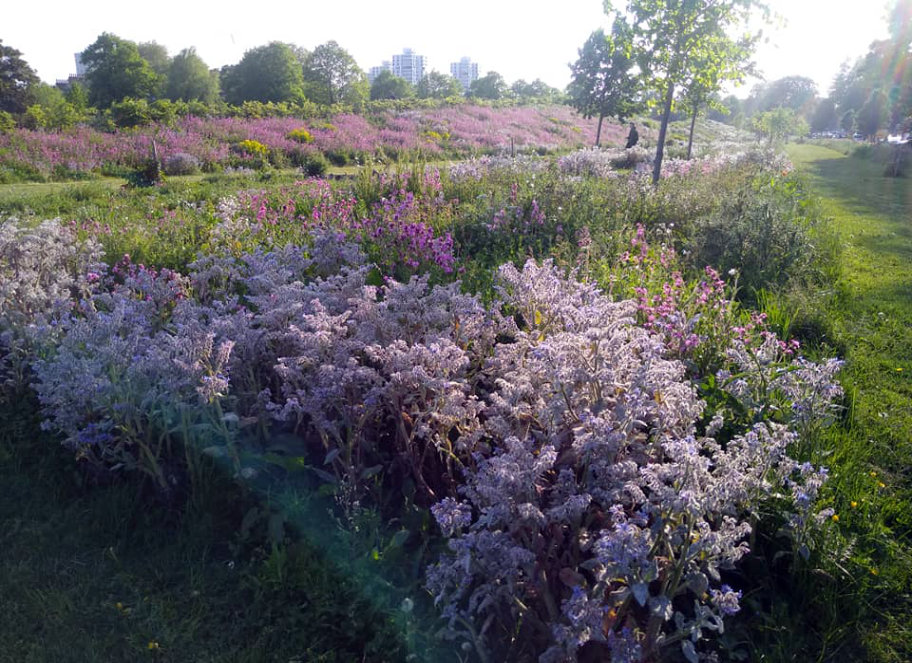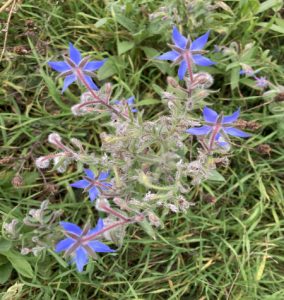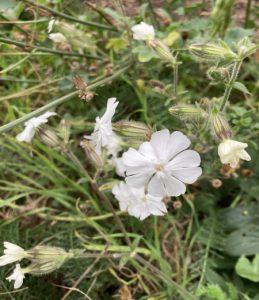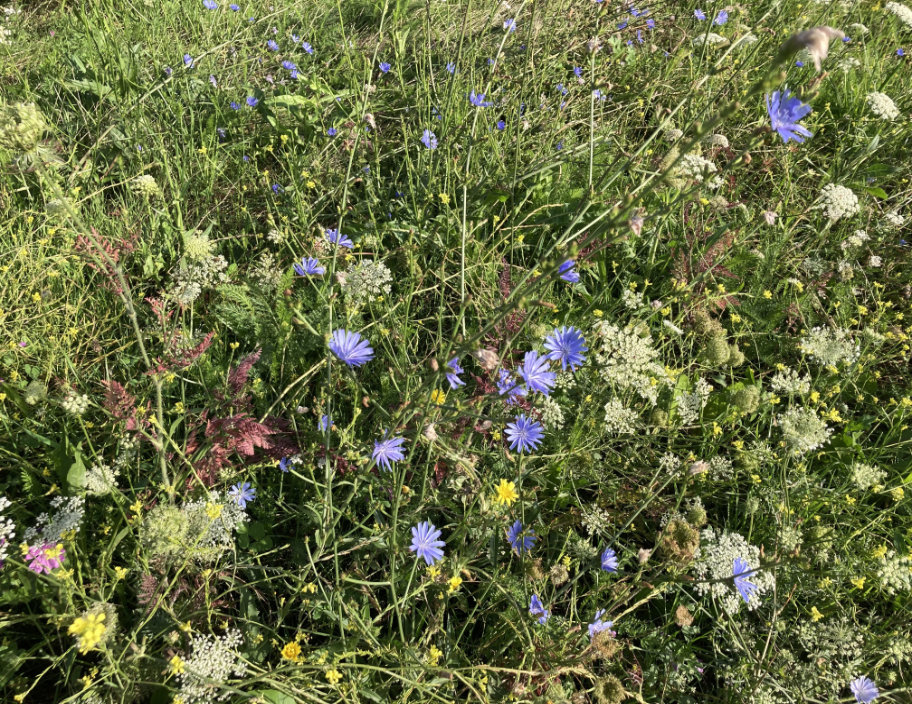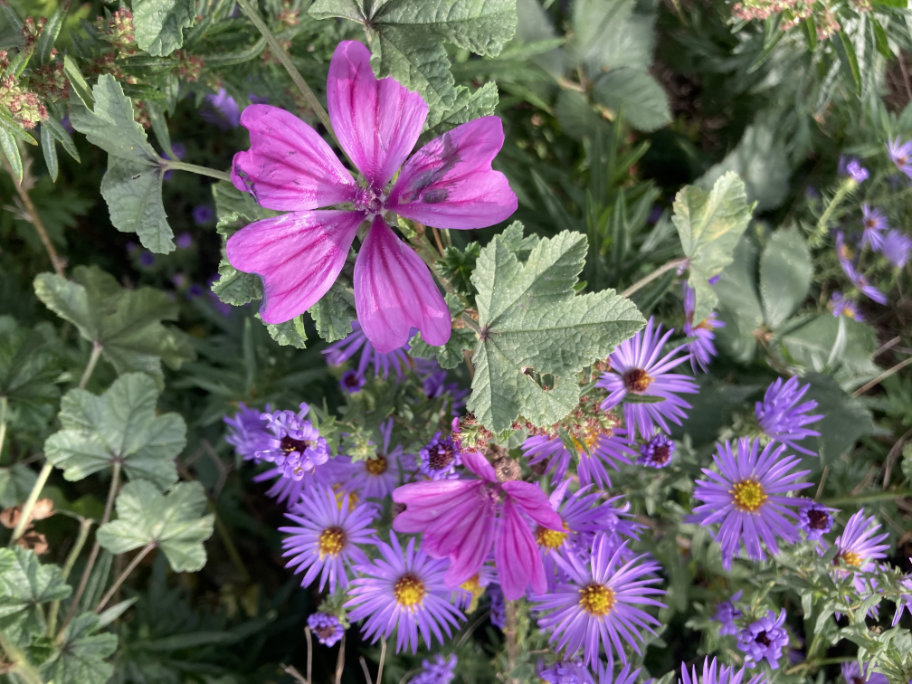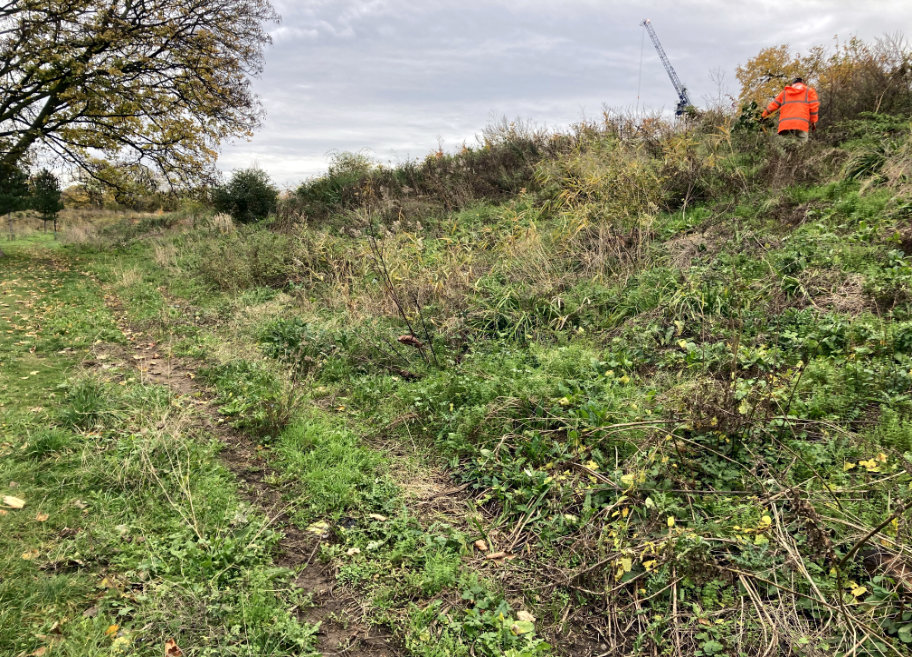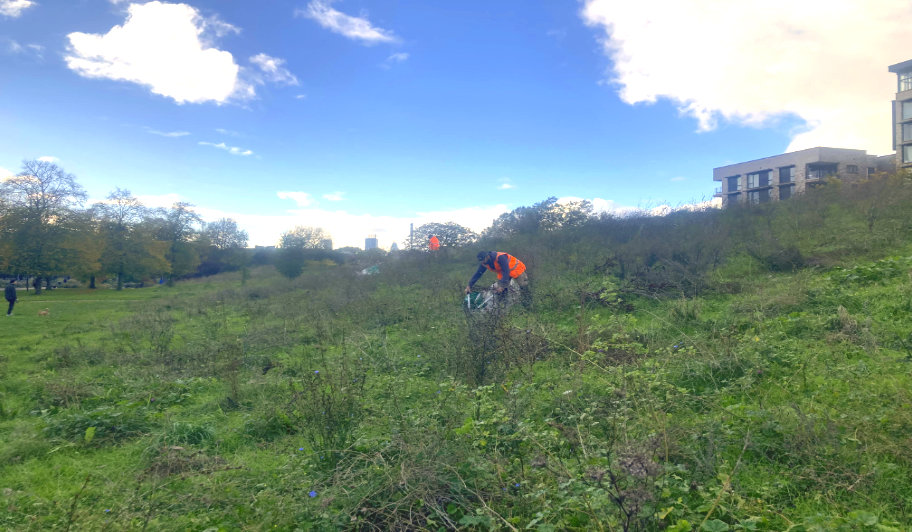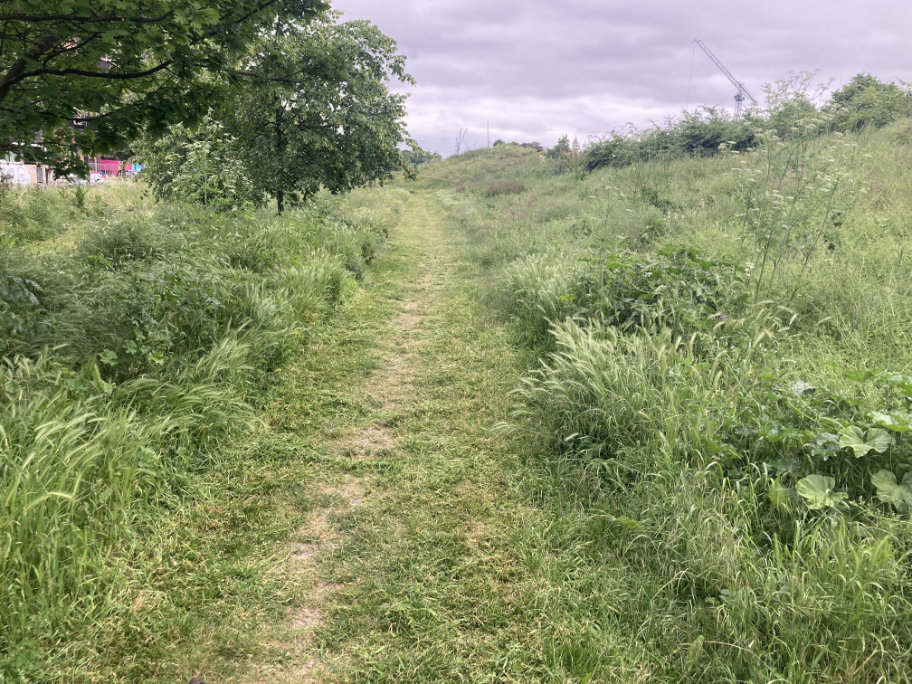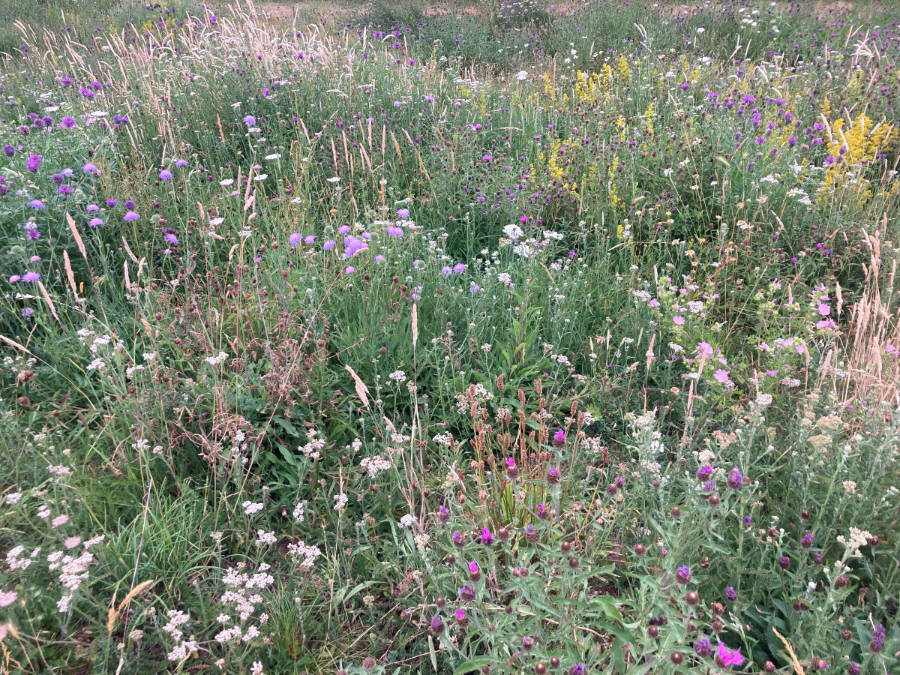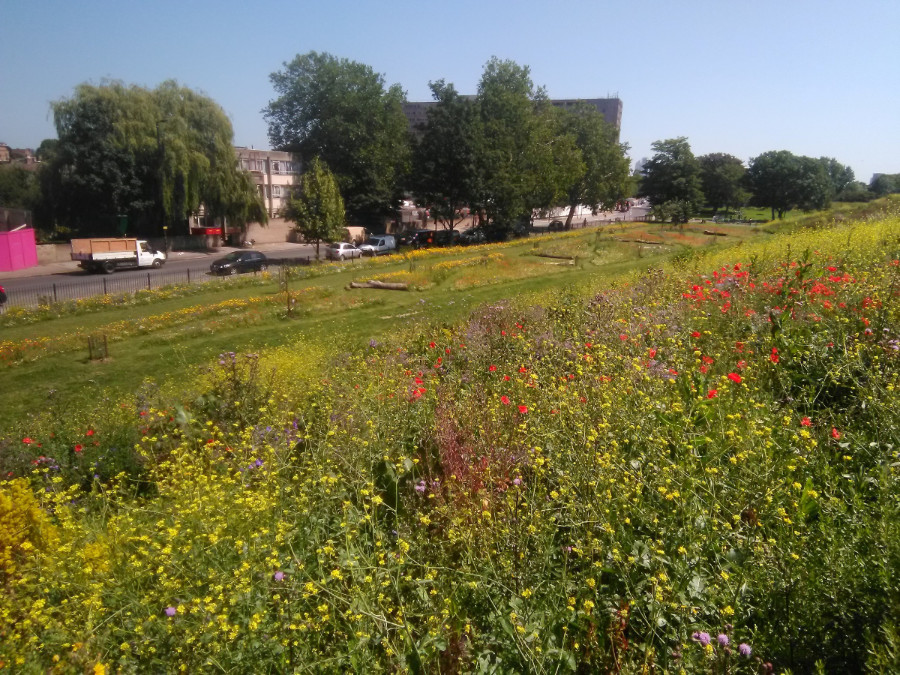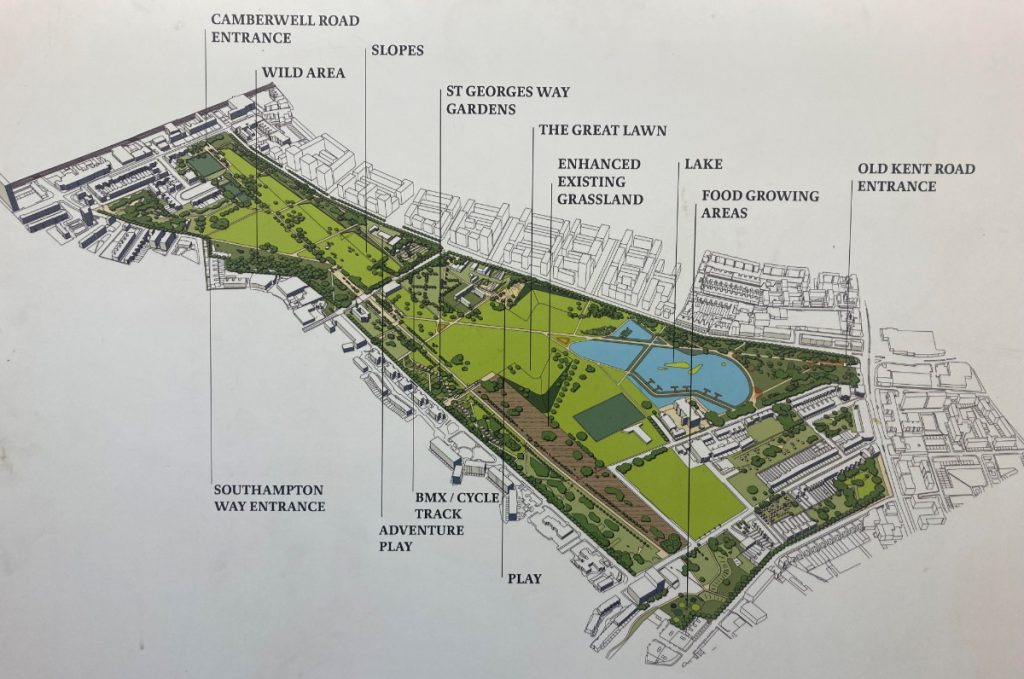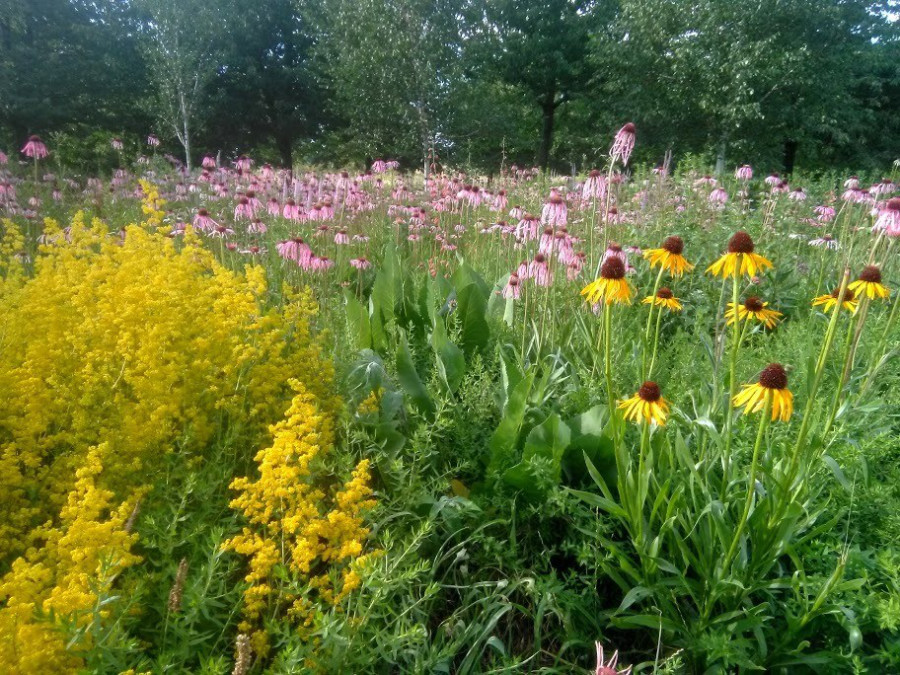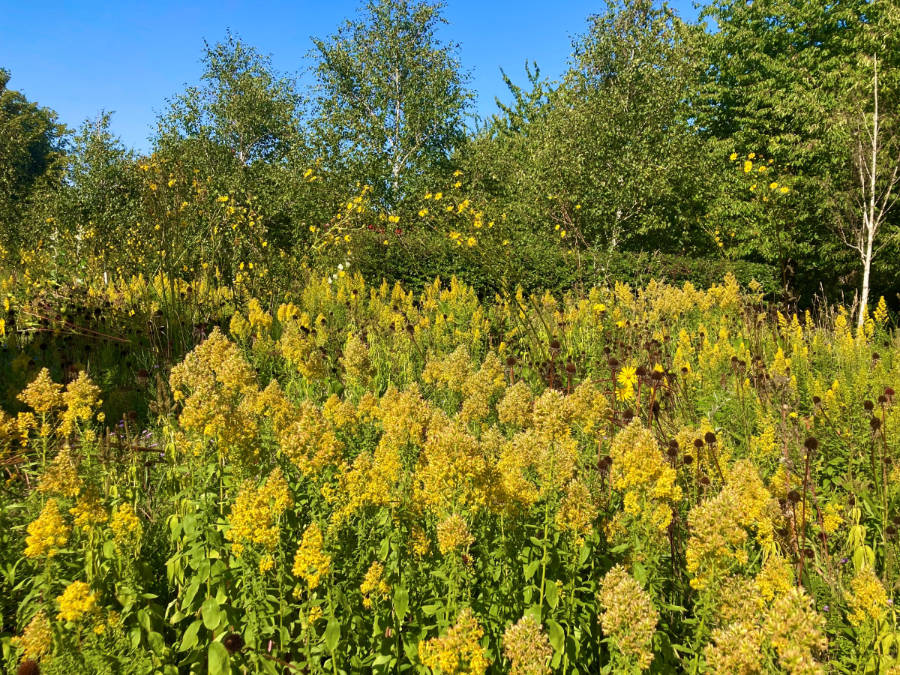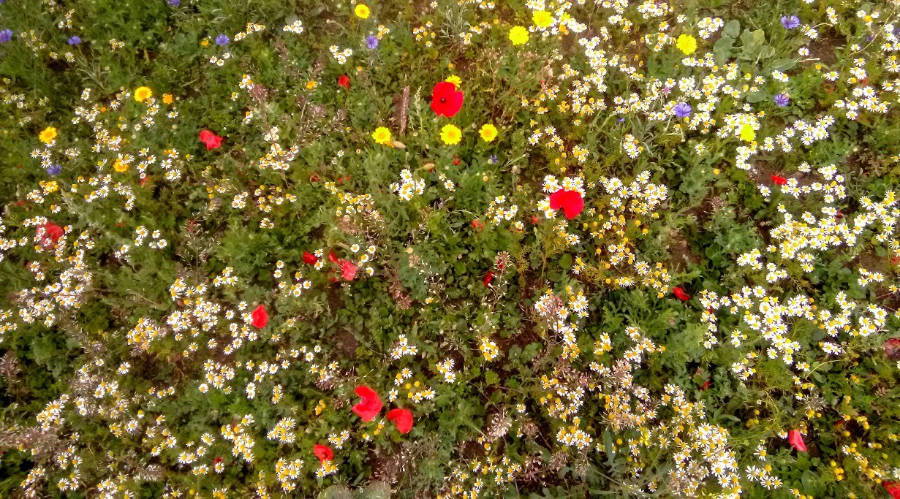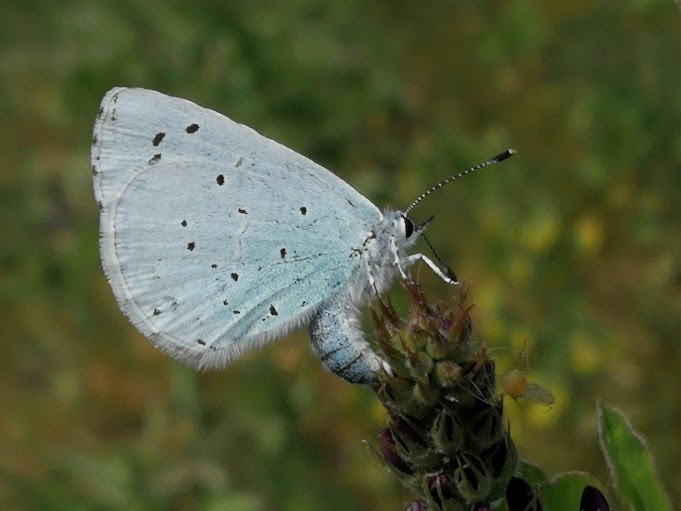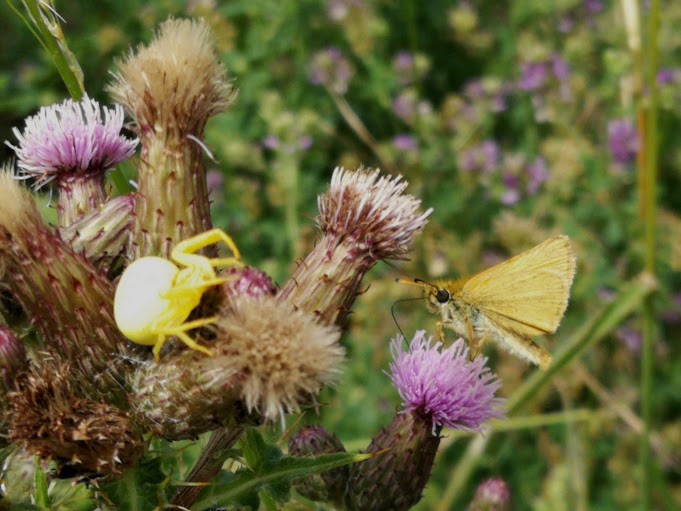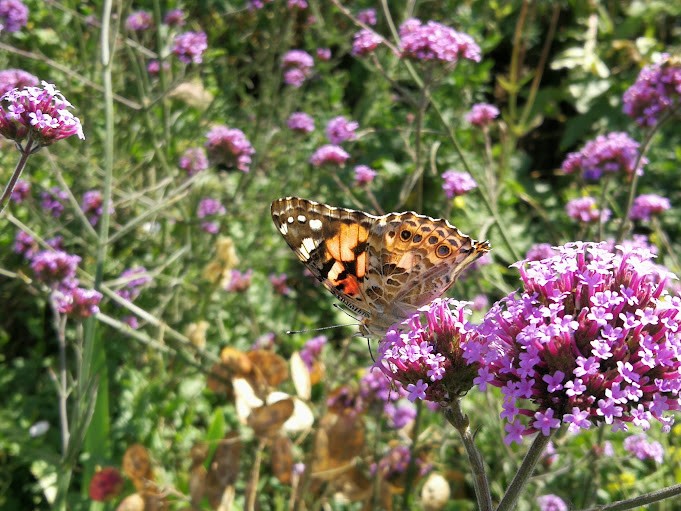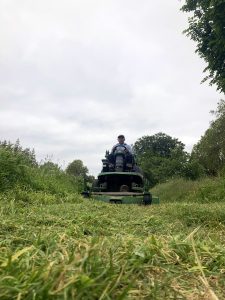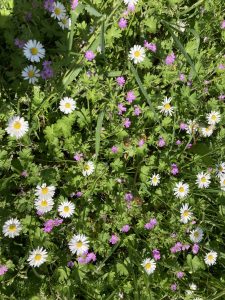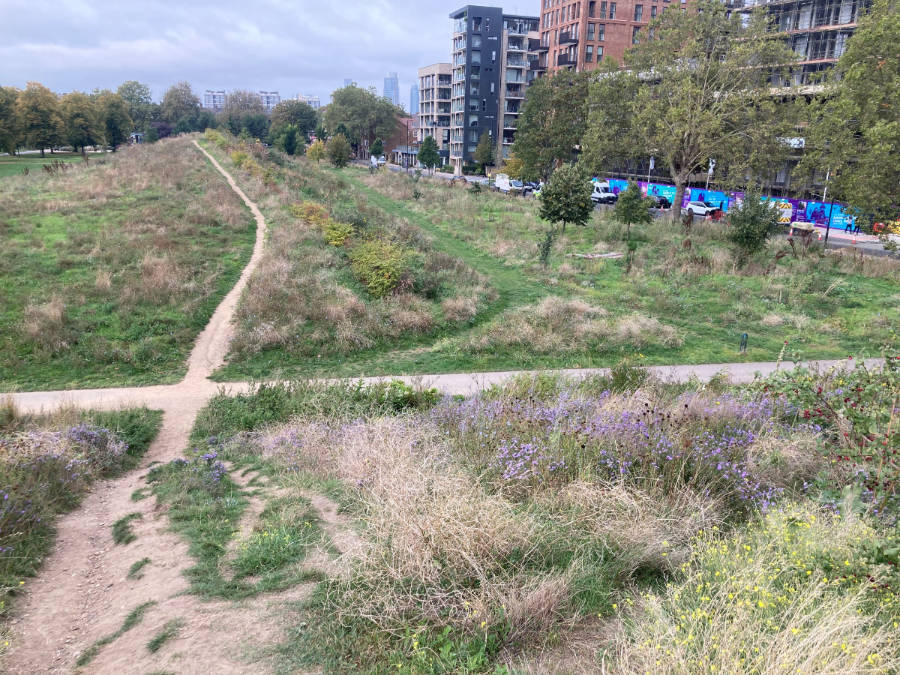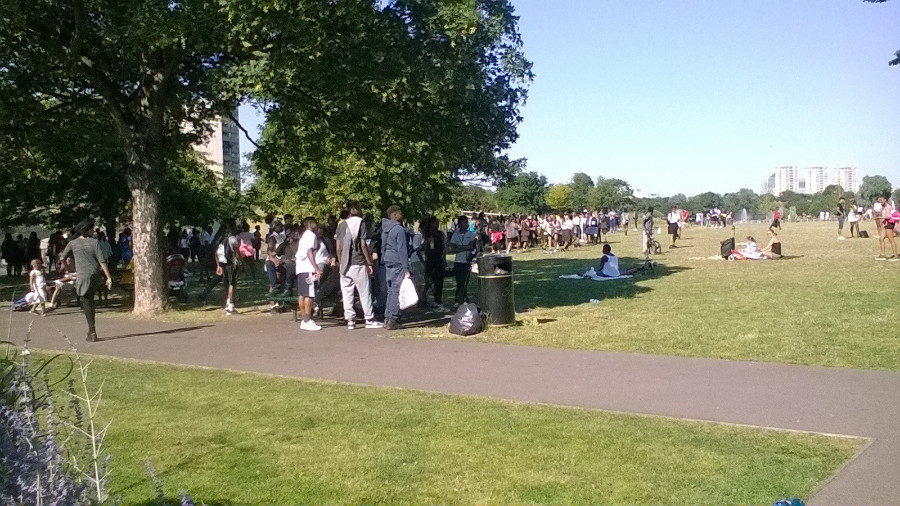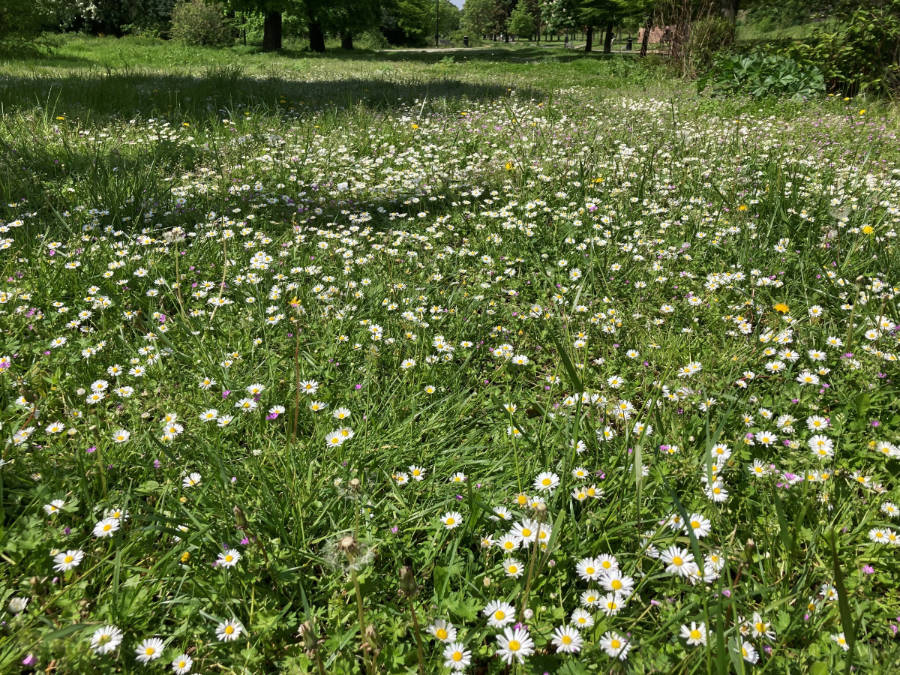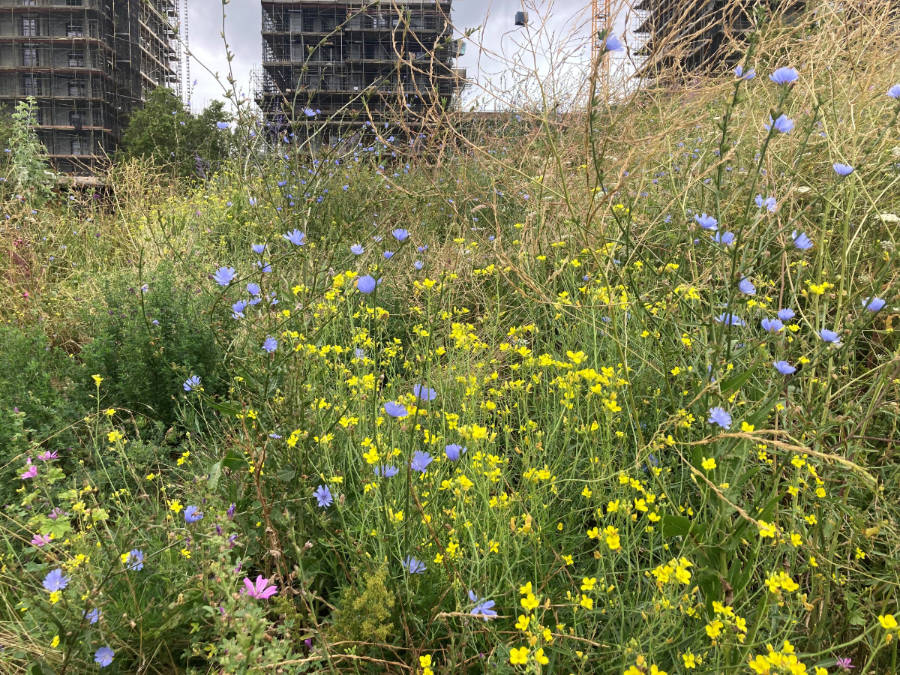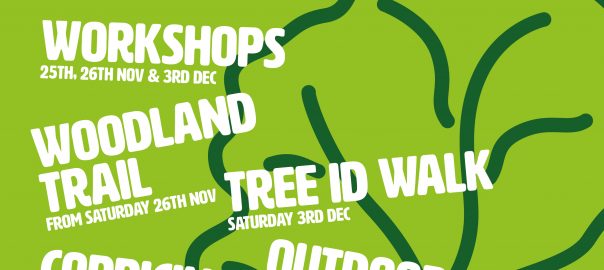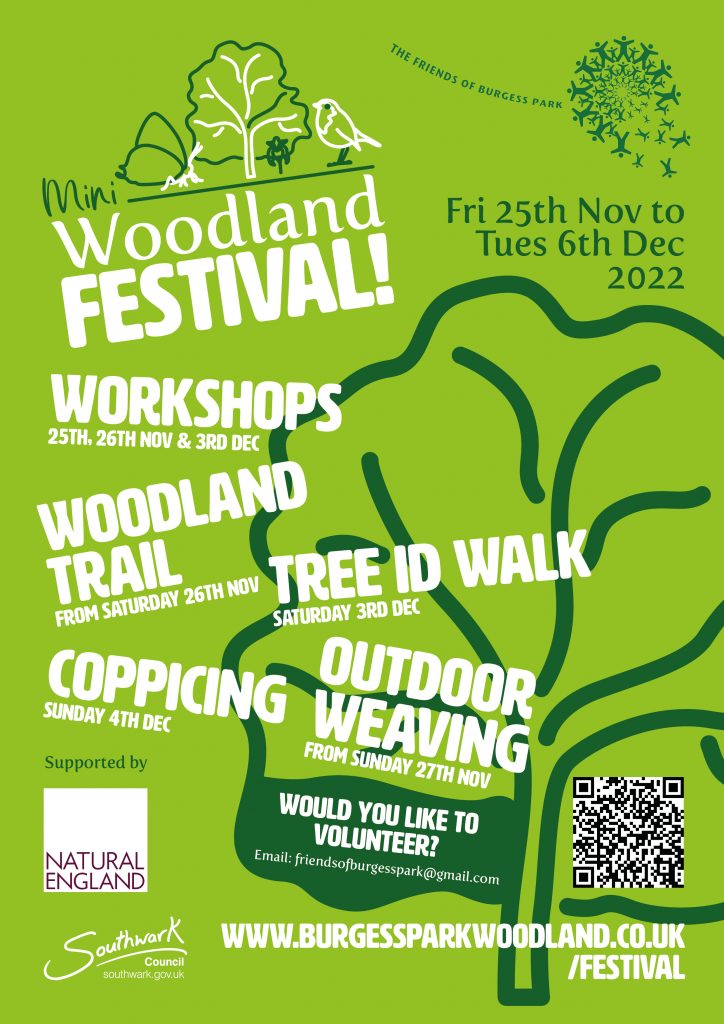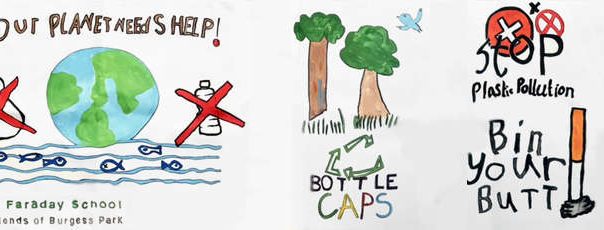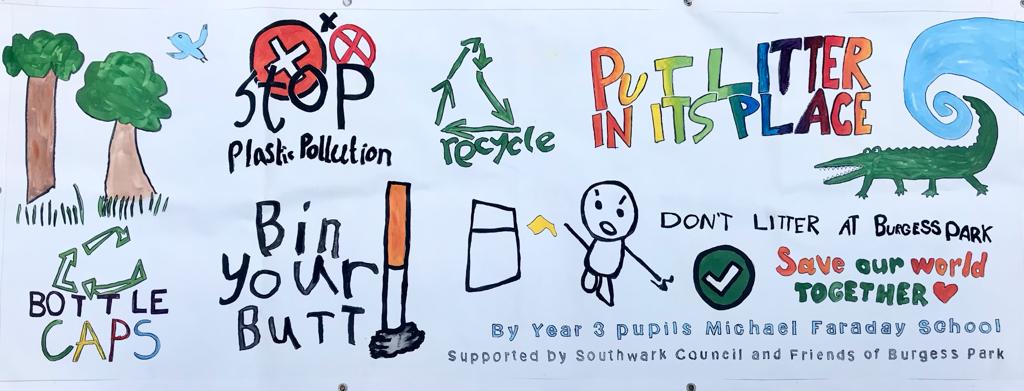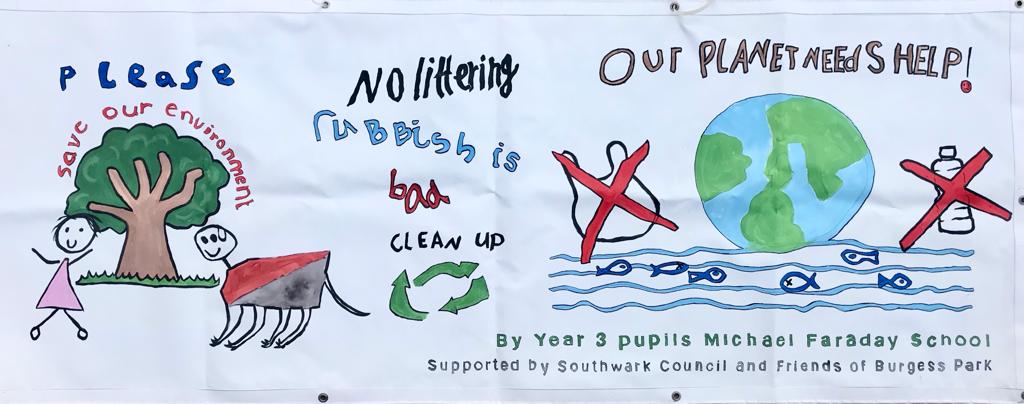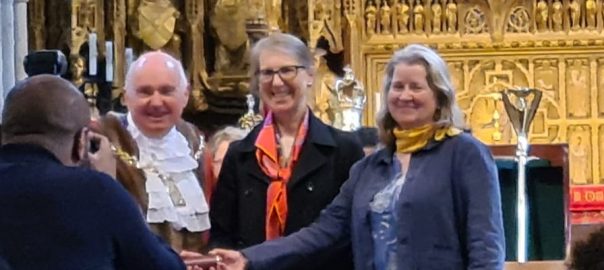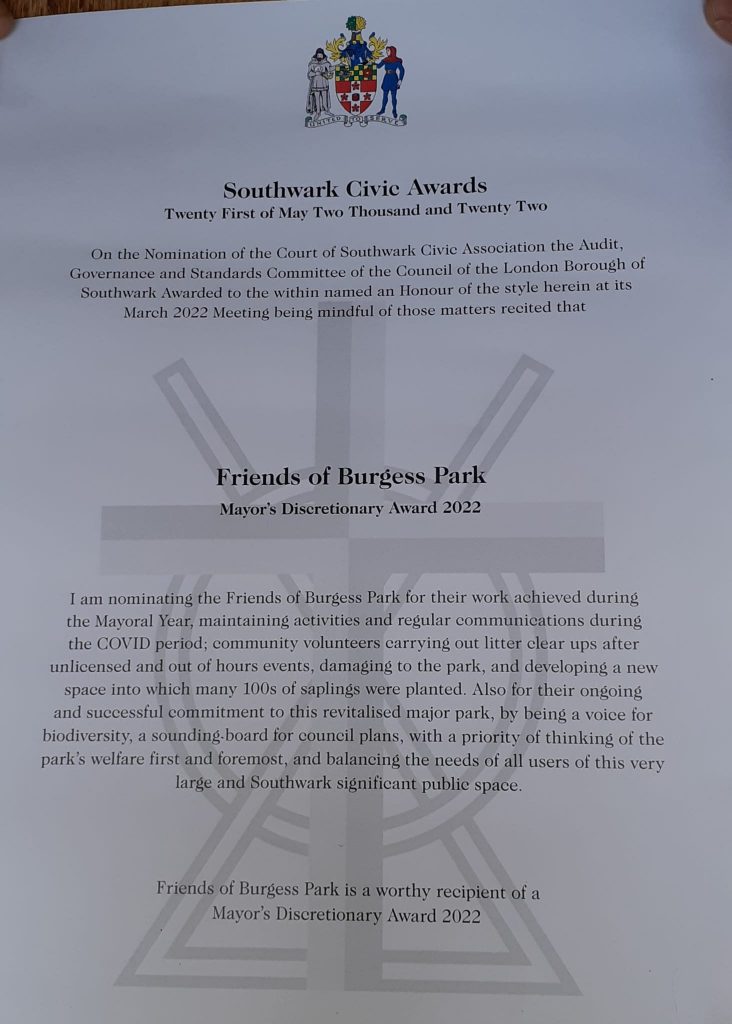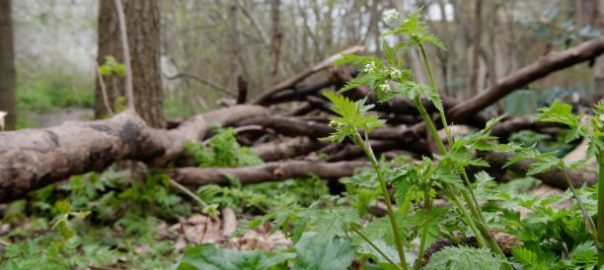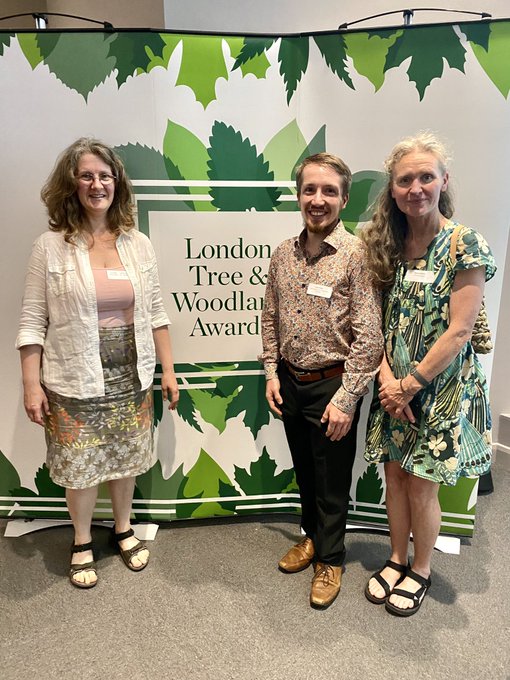Healthy woodlands survey
Saturday 26th March 2024
Friends of Burgess Park are hosting an event in Burgess Park led by Alastair McKinlay from TCV (The Conservation Volunteers) on assessing woodland condition.
More information and booking link on Eventbrite: Burgess Park Healthy Woodlands Assessment Survey free tickets, Sat 23 Mar 2024 at 10:00am
This is a practical hands-on session using the newly-developed assessment template developed by TCV and London Wildlife for London-wide work on woodlands.
Dawn chorus walk
Friday 29 March 2024
Hear the birdsong early in the morning (6 to 7:30 am) on a walk to help identify the many species in the park. This event will be led by local ornithologist Dave Clark who does a seasonal bird count for Burgess Park. More information on Eventbrite.
Birdwatching in Burgess Park
A hugely enjoyable guided walk took place on 27 Jan 2024 when 39 species were seen or heard on a stroll around a variety of habitats. The loud, distinctive call of a Cetti’s Warbler, a Song Thrush singing beautifully and a sighting of a Greenfinch were some of the highlights.
The annual RSPB (Royal Society for the Protection of Birds) Central London Local Group’s January walk in Burgess Park was led by two of its members, Dave Clark and Czech Conroy, and was co-organised with the Friends of Burgess Park. Read the fascinating blog by Czech Conroy and Alison Gibson describing the discoveries on the walk with great pictures by Laura Kor and the list of bird species compiled by Tom Rogers.
Burgess Park woodlands activities winter/spring 2024
Butterfly habitat management project in the Albany Road woodlands
On Saturday 27 Jan 2024, our woodlands maintenance volunteers were clearing brambles and coppicing to enhance the glade in the Albany Road woodlands. This was the first phase of the works organised by Southwark Council.
The second phase will be run by Big City Butterfly Project who will employ a contractor to de-turf, remove roots and sow the area with a meadow mix within the glade FOBP are creating.
This is part of the Friends of Burgess Park healthy woodlands project. We have also been awarded funding from the Southwark Council Cleaner Greener Safer fund for a new pathway. Read more about the woodlands in Burgess Park.
Flowering meadow
The Head Gardener of Burgess Park, Gregory Smith and his team have been developing a flowering meadow along Albany Road. His latest blog describes sowing seed in the area and what has resulted. “We can introduce a wider range of wild native plants by sowing seed, but often nature knows best and will try to find its own natural balance of plants over time … so then our job is to gently adjust this balance so it remains suitable for a busy park.”
To mow or not to mow
Gregory Smith, Head Gardener of Burgess Park has written about being a gardener and an environmentalist. He is concerned with what grows naturally, as well as which human-planted or sown, native or non-native plants can be added in order to create more diversity, food sources and habitat for wildlife. With a multi-layered approach to grass cutting, all kinds of wild plants can appear and lawns can become useful habitats. These will link all the intentional planting in the park to create a more complete ecology. Find out more about what the gardeners have been doing and experimenting with by reading his blog on making meadows.

Follow this link to read more about the Grand Surrey Canal on the Friends of Burgess Park heritage website: Bridge to Nowhere. Recently, Southwark News featured comments from our heritage website in their article about the canal before it was filled in in the 1970s and the traces of it that are still left.
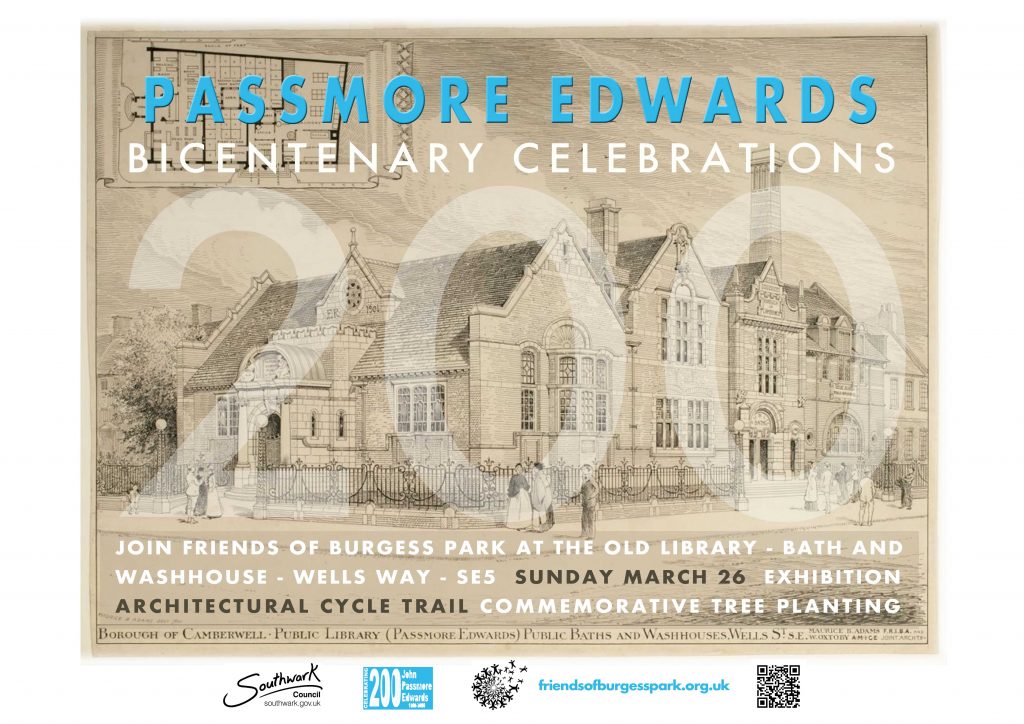
Celebration 26 March 2023
Passmore Edwards bicentenary
Celebrate the Grade II listed building and its benefactor Passmore Edwards
This year marks the 200th anniversary of Passmore Edwards’ birth on 24th March 1823 and Friends of Burgess Park are joining with others around the UK to celebrate the Passmore Edwards 200 Festival. We’ll be holding a programme of events based at the old library, baths and washhouse on Wells Way on Sunday 26th March. There’s an exhibition about the man and his legacy, children’s activities, a commemorative tree-planting, a reading by local author Jacqueline Crooks from her new book, refreshments and more.
Bike Tour 2–4pm We’ve also organised a short Bike Tour around three of Passmore Edwards’ south London buildings, guided by a renowned local architect. You can book now for the bike tour 2pm to 4pm on Eventbrite – places are limited to 25, so book early!
Commemorative Tree Planting 4.00–4.30pm Across the country Rowan trees are being planted to celebrate the Passmore Edwards bicentenary. Join us from 4pm for the tree planting and reading by local author Jacqueline Crooks from her new book Fire Rush, and refreshments.
Exhibition 1–5.30pm – Find out more about Passmore Edwards with an exhibition on loan from the Passmore Edwards legacy. Plus more about the old library bath and washhouse building, its history and future role, benefitting local people.
Read more about Passmore Edwards and the library on the Bridge to Nowhere Friends of Burgess Park heritage website.
More about the Passmore Edwards celebration in Burgess Park on the Southwark News website.
The Woodland project
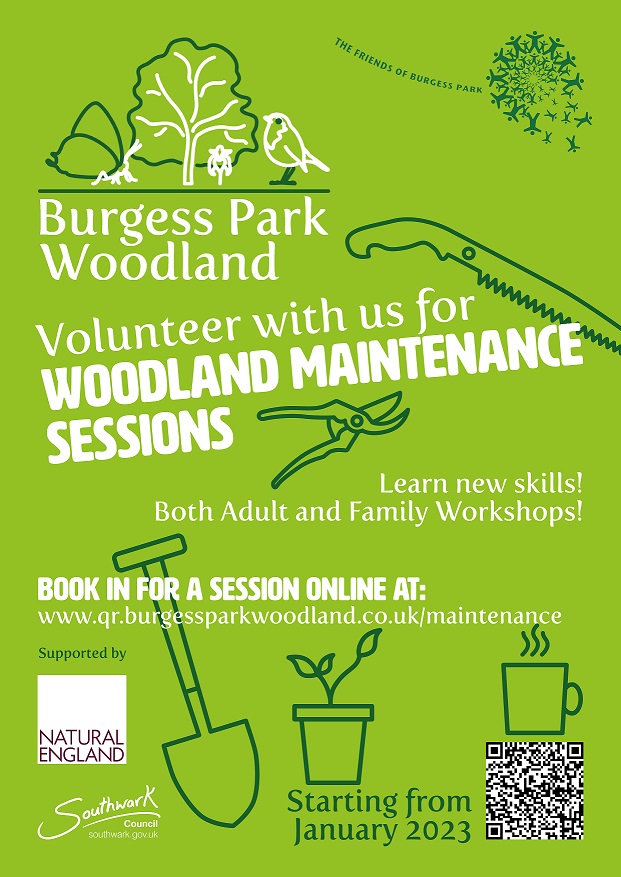
Friends of Burgess Park held a 12 day long festival to launch the Burgess Park Woodland in 2023, a project aiming to improve our woodland through better management and community engagement.
On Saturday 26 September the festival launched with the Albany woodlands pop-up walk and family woodland arts at Chumleigh Gardens playground.
Tackling litter
Michael Faraday primary school art work for anti-litter banners
Thank you Year 3 pupils (summer 2022) and for helping litterpic. See the banners in Albany Road near Giraffe House and Wells Way near the old library.
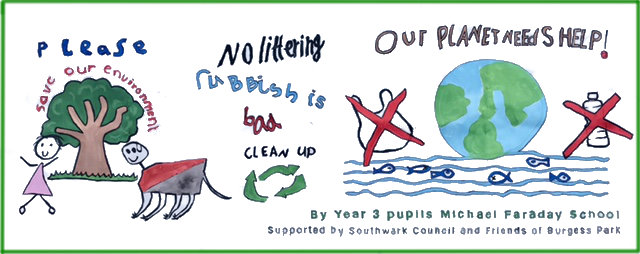
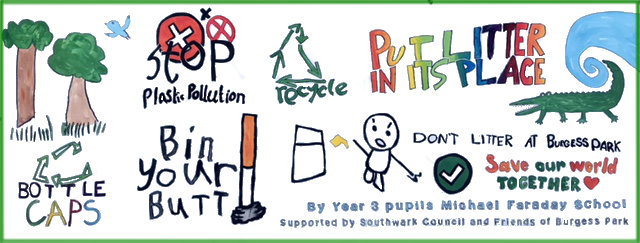
FOBP weekly litterpic every Monday morning 8am to 9am
FOBP provide litterpicks, gloves and bags.
Meet at Chumleigh Gardens – in the gardens behind the behind the cafe.
Woodlands wildlife
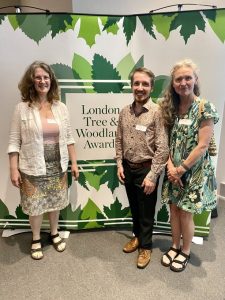
Highly Commended Our woodlands campaign to protect Southampton Way woodlands against development pressure was highly commended with a London Urban Forest Award at the London Tree and Woodland Awards 2022. Thanks to all local groups and park users who have supported us.
The Awards ( #TreeOscars) are organised by the Forestry Commission and supported by the Mayor of London. They aim to raise the profile of London’s trees and woodlands and their need for active management. The awards showcase the work taking place all over the city to protect and increase London’s urban forest (urban forestry guidance).
Southwark Civic Awards for FOBP:
Mayor’s Discretionary Award 2022
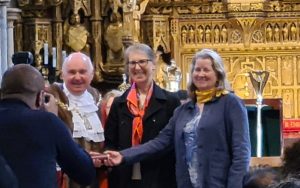
Thank you Southwark Mayor Cllr Barrie Hargrove for the 2022 Discretionary Award for Friends of Burgess Park’s “ongoing and successful commitment … thinking of the park’s welfare first and foremost” presented at Southwark Cathedral.
Massive thanks to all our volunteers, past, present, and more importantly, future ones. Join us!
Find out more about events in Burgess Park.
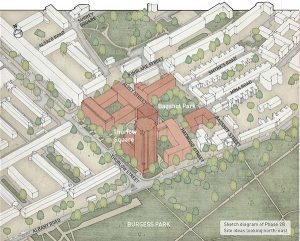 Events to discuss the Aylesbury Regeneration
Events to discuss the Aylesbury Regeneration
Plans are being developed for the regeneration of Phase 2B of the Aylesbury Estate on Albany Road next to Burgess Park, the area that includes the Wendover 241-471, Winslow, Padbury and Ravenstone blocks.
Public open day
Saturday 16 October 2021, 12 noon – 3pm
Surrey Square Primary School, Surrey Square, London SE17 2JY
Drop in any time to meet the team, view updated designs in a family-friendly environment and give your feedback on plans for Phase 2B of the estate regeneration. Members of the design team, Notting Hill Genesis and Soundings will be on hand to listen to feedback and answer questions. This event is free and open to all.
Drop in exhibition and stakeholder evening workshop
Monday 18 October 2021
Drop in exhibition 4-6pm; workshop 6-8pm
Upper Hall, Pembroke House, 80 Tatum Street, London SE17 1QR
Drop in to view the plans between 4-6pm. An early evening workshop will discuss public space, access and circulation.
Email aylesbury@nhg.org.uk or call 07920 466133 if you would like to take part.
Online public workshop
Tuesday 26 October 2021, 6-7.30pm
An online evening to discuss the revised plans.
Email aylesbury@nhg.org.uk or call 07920 466133 to take part.
Congratulations to Kye Whyte at Peckham BMX
Kye Whyte won a siver medal at the Tokyo Olympics. Many congratulations to him, his family and Peckham BMX Club.
The Peckham Club started at the Bird-in-Bush park track and then moved to the Burgess Park track.
Find out about riding at the Burgess Park track.
Information about the Peckham Challengers BMX Club.
Help protect the woodland in Burgess Park
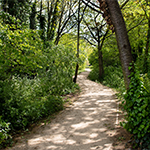 Burgess Park’s woodlands are vital for local wildlife and they are a precious resource in an urban area. Current plans for tall buildings on the edge of the woodlands will reduce the sunlight and change the habitat.
Burgess Park’s woodlands are vital for local wildlife and they are a precious resource in an urban area. Current plans for tall buildings on the edge of the woodlands will reduce the sunlight and change the habitat.
To understand what impact tall buildings would have, we need an independent wildlife report to present to Southwark’s Planning Committee. The goal is to raise £1500 by the end of May 2021 to commission an ecology report from the London Wildlife Trust. Find out more and make a Crowdfunder contribution here.
Read the blog about the importance of light for the Burgess Park woodlands.
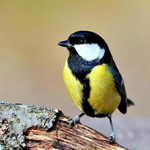 Annual bird count from your home
Annual bird count from your home
Unable to run our usual annual bird count in the park due to current restrictions, we explain how you can still get involved from home with the RSPB survey, as well as identify bird songs, and take a soundscape walk around the park. Find out more.
Sign the petition to stop building in Burgess Park
The Southampton Way entrance to Burgess Park has an area of derelict land used for what was supposed to be temporary scrap yards and car washing.
The land has been designated as part of the protected Metropolitan Open Land of Burgess Park for over 30 years as the council steadily CPO’d (Compulsory Purchased) the various bits of privately owned land selected to be a park in the original Abercrombie Plan after WW2.
However, a developer has bought an option on the site and is suggesting that a 6-storey residential tower-block be built on designated park land.
It is crucial that this land which has been blighted for so long, be landscaped and included in the park next to the recently improved wildlife site.
Please sign the petition calling on Southwark Council to oppose any planning application for building on this site and call on them instead to fulfill their promise to CPO and incorporate this piece of the Burgess Park jigsaw.
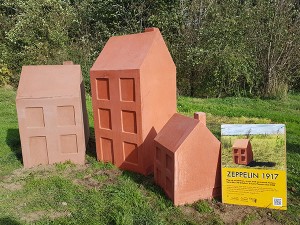 Park art tour
Park art tour
Take a walk, virtual or real, around Burgess Park to view artworks that have been placed here over the years. The Park Art map can be found on the Friends of Burgess Park’s Bridge to Nowhere heritage website which investigates the history of the park that emerged from the streets of south London.
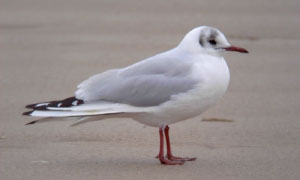 Gulls on the lake
Gulls on the lake
Take a look at the lake during the winter when the number of gulls and cormorants increases. Identify four different kinds of Gull.
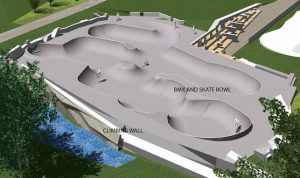 Urban games and skate bowl consultations
Urban games and skate bowl consultations
The concrete skate bowl will take over a section of the park next to the BMX track and unfortunately an estimated 3,000 square meters of grass will be lost due to its construction. Friends of Burgess Park object to the replacement of a green area with concrete, one of the worst producers of CO2 . This is the narrowest part of the park, which has been traversed with paths and cycle routes, with tall buildings planned to the north and possibly south, pouring concrete all over it is not an improvement. It is in fact turning this green area into an urban environment not a refuge from it.
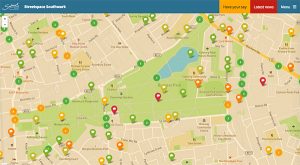 Have you had your say on the Southwark Council
Have you had your say on the Southwark Council
Streetspace plan yet?
Some ideas are already being implemented and Friends of Burgess Park were out looking at opportunities to improve active travel around the park.
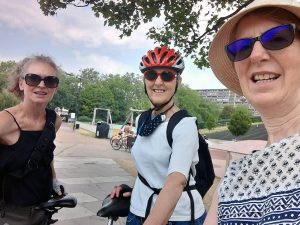 We are promoting the Burgess Park Orbital, a protected route, to take cyclists who want to travel securely and efficiently around the park through the neighbourhood so they don’t have to cross the park. The park is very busy at the moment with people socialising and exercising. Some cyclists simply want a straightforward way to get to the other side without interfering in park activities. Some want another place to exercise. Some want an alternative to cycling through the park in the dark winter months.
We are promoting the Burgess Park Orbital, a protected route, to take cyclists who want to travel securely and efficiently around the park through the neighbourhood so they don’t have to cross the park. The park is very busy at the moment with people socialising and exercising. Some cyclists simply want a straightforward way to get to the other side without interfering in park activities. Some want another place to exercise. Some want an alternative to cycling through the park in the dark winter months.
Using routes around the perimeter means that there will be adequate street lighting rather than trying to light the park and contributing to light pollution which must be controlled according to the National Policy Planning Framework (NPPF).
Click the links below and give each a thumbs up, bottom right.
Let’s show support to get these improvements.
Burgess Park Orbital
1. Cycle lanes around Burgess Park using street lighting.
Albany Road
2. Cycle lanes at Albany Road and the Old Kent Road.
3. 2-way protected cycle route the full length of Albany Road.
Albany Road and Portland Street
4. Adapt the cycle crossing from Portland Street into Albany Road to 2-way and on to Wells Way.
New Church Road/Southampton Way
5. Reinstate the existing cycle route by the new playground from Kitson Rd and continue it down Southampton Way.
Wells Way
6. Wells Way cycle lane and widen pavements.
7. Wells Way underpass for pedestrians and St George’s Way junction.
8. Provide cycle parking at the Old Library instead of car parking.
9. Pavements too narrow at junction of Wells Way and St George’s Way
Parkhouse Street/Wells Way
10. 2-way cycle routes on Parkhouse Street.
Burgess Park West
11. Burgess Park West.
St. George’s Way
12. Remove cars on St George’s Way and green route for cycling.
13. Provide cycle lanes which use street lighting for safe winter cycling.
Surrey Canal
14. Surrey Canal too narrow; promote Sumner Road cycle lane alternative
15. Peckham Square for pedestrians; promote Sumner Road cycle lane alternative
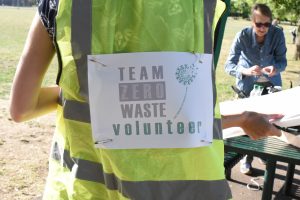 Litter-free Mondays and Thursdays July – September
Litter-free Mondays and Thursdays July – September
Weekly litter pick Mondays 7:30-9.30am and Thursdays 6:15-8pm July to September 2020. Meet at the picnic benches at Chumleigh Gardens. Gloves and litter pickers provided or bring your own.
More information here.
Read the blog.
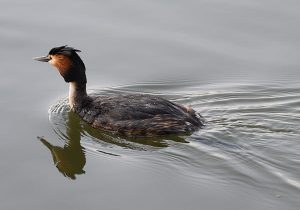 Launch of Southwark nature action conservation volunteers
Launch of Southwark nature action conservation volunteers
Dave Clark provided online training in recognising birdsong. He has an MSc in Ornithology from Birmingham University and is particularly interested in the interaction between birds and humans. Read his blog about birds in Burgess Park From Africa to the Old Kent Road and follow him on Twitter @daveclark77.
Burgess Park contains a mosaic of locally important habitats including areas of rough grass, wildflower ‘meadows’, hedges and patches of bushes, scrub and trees; and a lake and some small ponds with reeds.
Regular visitors include House Martins, Swifts, Blackcaps, Reed Warblers and Whitethroats. Other birds include House Sparrow, Starling, Greenfinch, and typical garden species like the Robin and Blue Tit. The lake has several different species of waterbirds, including three species of geese – Canada, Egyptian and Greylag.
Tuesday 3 March 2020, 7pm, Theatre Deli, Wells Way SE5 Book ticket.
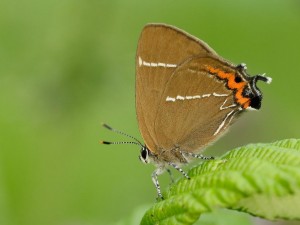 Help with species’ habitats and nature conservation in Southwark parks: carry out surveys, help with planting, dig ponds, map wildlife sightings to target habitat action, photograph wildlife and habitats etc.
Help with species’ habitats and nature conservation in Southwark parks: carry out surveys, help with planting, dig ponds, map wildlife sightings to target habitat action, photograph wildlife and habitats etc.
Launch event includes talks from Simon Saville, Butterfly Conservation and Jon Best, Southwark Ecology Officer, films and discussions. Find out more.
Come along to the Big Garden Birdwatch
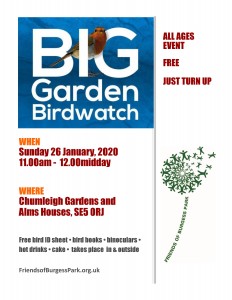 at Chumleigh Gardens
at Chumleigh Gardens
on Sunday 26 January 2020
11 am – 12 midday
All ages welcome
Free event
Free bird ID sheet
Hot drinks and cake
Identifying wildlife at Burgess Lake
We put up signage at the lake and on the bridge about the waterfowl and fish in the lake. We hope this will help park users know more about wild-fowl, fish and plants and how the lake works as a habitat.
Find out more about what Friends of Burgess Park have been doing at the lake with help from children at Cobourg School.
Friends of Burgess Park AGM
Tuesday 12 November 2019 7 pm
at Theatre Deli, Old Library, Wells Way, SE5 0PX
All welcome to hear about Burgess Park Past, Present and Future
Speakers, Q&A:
Diana Cochrane, Walworth History Society, Burgess Park and Beyond heritage
Jason Leech, Camberwell Society, Camberwell plan
Guy Robinson, Camberwell Fields Residents’ Association, Metropolitan Open Land
Plus: Elect new committee, approve accounts, review constitution, priorities 2020.
October monthly meeting changed
The next FOBP meeting 1st October 2019 is being transferred to the council planning committee so that we can comment on and object to the sports centre application. The planning meeting is open to the public Tues 1 October from 6.30pm, 160 Tooley St. SE1 2QX. Planning committee agenda and report.
The planning committee meeting was cancelled at the last minute because a report from Sport England had not arrived. The next Planning Sub-Committee B meeting is now scheduled for Tue 29 Oct 2019 (to be confirmed).
FOBP objections:
1. Loss of Metropolitan Open Land
2. Impact of the new pitches and spectator mounds on the surrounding park.
3. The design of the new sports centre does not fit with the character of the park or the Cobourg conservation area, or achieve environmental standards.
Wild Burgess: birds, butterflies, moths and crows
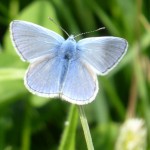 Find out about the latest wildlife sightings in Burgess Park. Ornithologist Dave Clark is thrilled to find more Burgess birds than 10 years ago. Guest blogger Simon Savile of the Butterfly Conservation organisation tells us where to look for butterflies and moths in Burgess Park. Regular FOBP blogger Jenny Morgan urges us to appreciate crows and the more subtle changes in the park.
Find out about the latest wildlife sightings in Burgess Park. Ornithologist Dave Clark is thrilled to find more Burgess birds than 10 years ago. Guest blogger Simon Savile of the Butterfly Conservation organisation tells us where to look for butterflies and moths in Burgess Park. Regular FOBP blogger Jenny Morgan urges us to appreciate crows and the more subtle changes in the park.
From Africa to the Old Kent Road: Bird species in Burgess Park
Wednesday 19 June 2019, 9 am – 10.30 am
meet at Chumleigh Gardens
Dave Clark, ornithologist, will lead the circular walk (approx 1.3 hrs) finishing at Chumleigh Gardens café for further informal discussion. FREE – Donations to FOBP welcome. Read Dave Clark’s blog
Read about Burgess Park in the Camberwell Quarterly
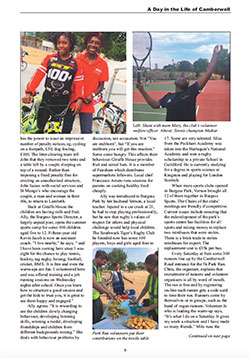 FOBP members toured the park with Marie Staunton CBE who wrote the article. Thank you to the editor of the Camberwell Quarterly, Margaret Powley-Baker for letting us include a copy here – From dawn to dusk – Something’s going on in Burgess Park.
FOBP members toured the park with Marie Staunton CBE who wrote the article. Thank you to the editor of the Camberwell Quarterly, Margaret Powley-Baker for letting us include a copy here – From dawn to dusk – Something’s going on in Burgess Park.
It gives a tremendous picture of the park from the Community Garden at one end to the tennis courts at the other celebrating the wide range of activities in-between – rugby, BMX, children’s nurseries, play groups, art clubs, theatre groups to name a few. It is all enabled by park workers and many dedicated volunteers.
2019 Development planning
Southwark Council is holding the next Old Kent Road Forum on open space on Saturday 19 January 2019 from 11am to 1pm at Christ Church Peckham, 676-680 Old Kent Road, SE15 1JF
Sports Hub consultation
20 November 2018
Help shape the future of Burgess Park – Southwark Council wants your views on the sports centre hub. Come along to the drop-in session (20 November) between 4–7pm at the Burgess Park Sports Centre SE5, or have your say online.
Report wildlife sightings
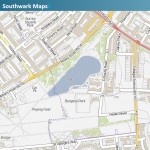 London is home to a diverse range of animals, including everything from bats to reptiles, and Southwark Council is trying to find out which species can be found where in Southwark.
London is home to a diverse range of animals, including everything from bats to reptiles, and Southwark Council is trying to find out which species can be found where in Southwark.
On the Council website you can click on an interactive map, zoom to the location of your sighting and an email link will appear on the left. Enter your email address and click send.
Your records will help the Council to manage wildlife in Southwark and gain a better understanding of what lives where.
Sightings will be collected and shared with the London Biological Records Centre, Greenspace Information for Greater London (GiGL).
Peckham BMX club in Burgess Park
CK Flash with brothers Tre and Kye Whyte were interviewed by the BBC about the value and benefits of the BMX club. See the BBC video shot at the track in Burgess Park. The brothers are both in the British Cycling Academy and Kye just won silver at the 2018 European Championships.
New art installation “Silent Raid” opening events
 Wednesday, 17 October
Wednesday, 17 October
The new art work by Sally Hogarth commemorates the Zeppelin raid on Calmington Road (now part of Burgess Park) in 1917 with ten houses representing each of the people killed in the attack. Read Sally Hogarth’s blog on creating the sculptures.
The launch will be exactly 101 years after the attack and is part of the Zeppelin 1917 programme of events in Burgess Park about the First World War.
- Find out more at the mini Zeppelin 1917 exhibition based on the centenary commemoration last year including Keith Roberts’ Zeppelin artwork.
- Listen to the fascinating podcast audio adaptation of the Animated Walk from the Friends’ Zeppelin 1917 season.
Location map of the sculptures and more information.
Supported by Southwark Council, the Friends of Burgess Park and Theatre Deli.
Photos of the sculptures by Alexander Christie Instagram Twitter
Friends of Burgess Park win Mary Boast History Prize
We had great news on 30th September 2018! The Mary Boast Prize, which is organised by the Camberwell Society, has been won by an essay from some of the Friends of Burgess Park ‘Zeppelin 1917’ team. A big thank you to all the volunteer authors including the essay editing team of Judith Barratt, Joan Ashworth and Susan Crisp. Find out more here.
First World War Victoria Cross commemorative stone unveiling
Monday 3 September 2018, 11am, Old Kent Road entrance, Burgess Park
In September 1918 local hero Jack Harvey was awarded a Victoria Cross for bravery. One hundred years on a commemorative paving stone will be unveiled with a civic service led by the Mayor, Councillor Catherine Rose, with the Army in attendance. All welcome.
Jack Harvey, was born at 2 Canal Grove (just off Old Kent Road) in the old borough of Camberwell. This is why the site chosen for the commemorative paving will be the Old Kent Road main entrance to Burgess Park.
The Victoria Cross commemorative paving stones programme is a national scheme that will see all 627 VC recipient of the First World War commemorated. More information.
More development plans around the park:
- Southwark Council is holding the next Old Kent Road Forum on Saturday 20 October from 11am to 1pm at Christ Church Peckham, 676-680 Old Kent Road, SE15 1JF
The theme for this forum will be Transport with ward councillors – Evelyn Akoto, Michael Situ and Richard Livingstone and Johnson Situ (Cabinet Member for Growth, Development and Planning). Find out more about the development schemes in Old Kent Road. - Burgess Business Park/Camberwell Union Update Peachtree (the developers) have amended their proposals following community objections and discussions with Southwark Council Planning. The revised planning application is open for comments. The key documents showing the changes and draft FOBP response here. To put in your comments go to the planning application 17/AP/4797 by 21 October. More information
- 37-39 Parkhouse Street (Hunnex site) is a proposed mixed use scheme of commercial rented accommodation including on-site 50% affordable housing. This substantial site backs onto Burgess Park.
- Old Kent Road redevelopment continues with plans for the ARGOS and DFS site opposite Burgess Park OKR entrance. Details of proposals include a hotel, cinema commercial, tall private block and rented housing. Comments wanted by the end of July for a planning application in the autumn.
Zeppelin – the podcast
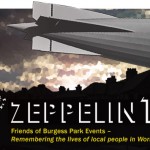 We are pleased to announce the publication of the latest edition of the Bridge to Nowhere podcast!
We are pleased to announce the publication of the latest edition of the Bridge to Nowhere podcast!
This episode is an audio adaptation of the Animated Walk from the Friends’ Zeppelin 1917 season which ran throughout October 2017. It tells the story of the Zeppelin Raid on Camberwell, in the industrial and residential area that existed before the creation of the park itself, and puts the tragic events of that night into the context of local life at that time.
And if you subscribe (it’s free), you will also receive future episodes automatically, as soon as they are released.
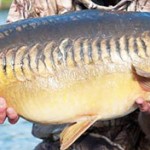 Wild Burgess at the Fishing Lake
Wild Burgess at the Fishing Lake
What is going on above and below the lake? Find out more about the plants, insects, birds and fish.
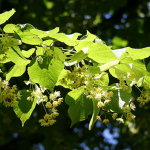 Wild Burgess in May
Wild Burgess in May
Any day now, the Lime trees (Common Lime or Linden, Tilia Europea) will come into bloom. They perfume the air with one of the most delightful scents of summer. Walk along the main avenue by the tennis courts … Read more about the flowers, the butterflies and bogs of Burgess.
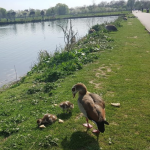 Burgess goes wild about waterfowl
Burgess goes wild about waterfowl
Despite the terrible weather (28 April 2018) the Friends of Burgess Park were out at the lake finding out how much people knew about the birds on the lake; their names; what they eat and the problems of feeding bread to the ducks. Read about the birds we saw and counted and what we should be feeding them.
The identification session was part of the international City Nature Challenge with 70 cities competing to see who could make the most observations of nature, find the most species, and engage the most people in the worldwide 2018 City Nature Challenge.
Unleash your wild side
Find out more about the wildlife in Burgess Park over the next few months.
All through June we are doing #30DaysWild #wildaboutburgess part of the London Wildlife campaign. The perfect excuse to share your favourite photos @BurgessPk.
Saturday 21 July – 4.30 to 6pm Pond-dipping by the lake. Part of London’s National Park City Week.
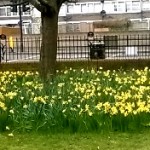 Going wild
Going wild
Find out what to look for as spring comes to Burgess Park – the sights, sounds and scents.
Community Hustings on planning and regeneration
Monday 22nd October 2018 7-9pm
Assemble from 6.45pm at St Philips Church Hall, Avondale Square, SE1 5PD, near Asda on Old Kent Rd.
Help to improve existing neighbourhoods and existing communities’ health and wellbeing.
* Cllr Rebecca Lury, Council deputy leader and Cabinet member for
Culture, Leisure, Equalities and Communities
* Cllr Johnson Situ, Cabinet Member for Growth, Development and Planning
* Professor Kevin Fenton, Strategic Director of Place and Wellbeing, the
Chief Officer for the new Council department, which has brought together
planning, regeneration, public health and community engagement.
Please register through eventbrite here: https://bit.ly/2KYEA1M
Organised by the Southwark Planning Network (SPN)
Park developments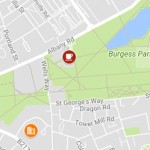
Find out more about developments planned in and around Burgess Park
Burgess Park South
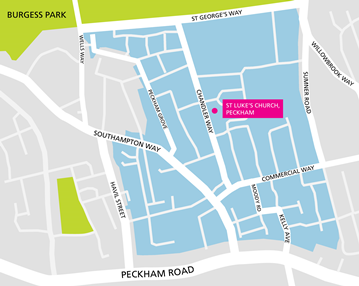
Southwark Council are looking at ways to improve the streets south of Burgess Park, with a view to making the area safer and healthier for all road users.
Workshops to help Southwark design the future look and feel of these streets.
- Session 1: Tuesday 30 January 6pm
- Session 2: Tuesday 13 February from 3pm
- Session 3: Wednesday 21 March from 5.30pm to 8pm
At St Luke’s Church Peckham, Chandler Way, Peckham, London, SE15 6LU.
First session: for residents and road users to tell us what the issues are in these streets.
Second session: Walking tour of the area to look at the some of the issues identified and co-design workshop where residents will work with a specialist street design team to come up with ideas for improving the roads.
Third session: local people will have a chance to comment on the design proposals and help make further changes.
Further information, or contact highways@southwark.gov.uk, call 020 7525 2347, or write to FREEPOST RSCT-BHXK-SCAJ, Highways Division (Transport Projects) Floor 3, Hub 2, Southwark Council, PO BOX 64529, London, SE1P 5LX.
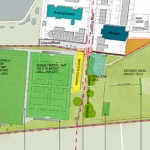 New sports centre and pitches consultation
New sports centre and pitches consultation
Thursday 11 January 2018, 4.00 -7.00pm
at Burgess Park Community Sports Centre, Cobourg Road, SE5 0JD
Southwark Council with match funding from Parklife Funding Partners (The FA, the Premier League and Sport England) are presenting draft design proposals for developing the community sports hub . Who will run the new facility? Will there be more fencing of sports’ fields? Will Cobourg Road and Neate Street be closed? What will the provision be for access to Cobourg School? Will there be through routes for pedestrians and cyclists? What about parking? Will trees be cut down? Please come along and say what you think about the new plans. Download a pdf of the latest plans. Email your comments to Southwark by 19 January 2018.
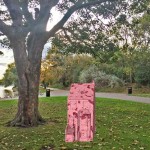 WWI Centenary Memorial
WWI Centenary Memorial
A new public art installation is being planned for Burgess Park. Ten small replica houses will be placed close to the site of the 1917 Zeppelin bomb. More details and locations are on the application for planning permission.
Friends of Burgess Park Zeppelin 1917 project.
Burgess Park West closures
New Church Road is being permanently closed from 4 December as part of the Burgess Park West project. Lighting on New Church Road is being switched off as well as the lighting on the pathway that leads from Albany Road to New Church Road. This is for safety reasons as Southwark do not want people to follow a lit route from Albany Road into the park since it is a dead end. Southwark urge you not to travel through the park after dark until the new lit pathway is open. The new Quietway 7 cycle pathway which will cut through the park will be built as an alternative route. It is expected to open in spring 2018.
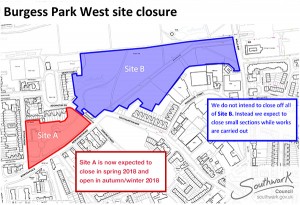 The plan shows which areas of the site Southwark intend to close and for how long. Read more about the closures here.
The plan shows which areas of the site Southwark intend to close and for how long. Read more about the closures here.
Trees earmarked for removal in Site A (see map) will be felled in the week starting February 5th.
This is the latest stage in the implementation of the Burgess Park Masterplan. More information on the project can be found here: www.southwark.gov.uk/burgessparkwest or contact John Wade (020 7525 0141) or Pippa Krishnan (020 7525 5133).
Consultations on the Burgess Park West new play area will take place on:
Tuesday 28 November 3.30 to 5pm Chumleigh Gardens play area, next to the Park Life café, off Albany Road. If the weather is poor the consultation will be inside the Chumleigh West building, which will be signposted from the play area.
Monday 4th December 6pm to 8pm Southwark Council’s offices 160 Tooley Street, SE1 2QH
Drop by to see the emerging design which has taken into account previous consultation results, and tell the designers your ideas and opinions.
If you cannot attend either session and are still interested in the play area design, please get in touch with Pippa Krishnan pippa.krishnan@southwark.gov.uk
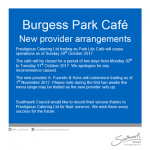 Burgess Park Café
Burgess Park Café
A new catering company will be taking over Burgess Park Café. The café will be closed on Monday and Tuesday, 30 and 31 October 2017. Southwark Council apologise for the inconvenience and thank Prestigious Catering Ltd trading as Park Life Café who will cease operations on Sunday, 29 October 2017. A Fuorvito & Sons will take over on Wednesday, 1 November 2017.
Friends of Burgess Park Meetings
First Tuesday of each month
All welcome from 7-9 pm
Burgess Park Community Sports Centre, 106 Cobourg Road, SE5 0JV.
Bridge to Nowhere history project
The Bridge to Nowhere heritage project funded by the Heritage Lottery Fund involved loads of people to learn more about the history and heritage of Burgess Park. The project included the Wells Way underpass artwork – a reminder of the main feature of the area which lead to the creation of the park – the Grand Surrey Canal. And we have launched the new Burgess Park Heritage Trail. Look out for the blue plaques around the park.
